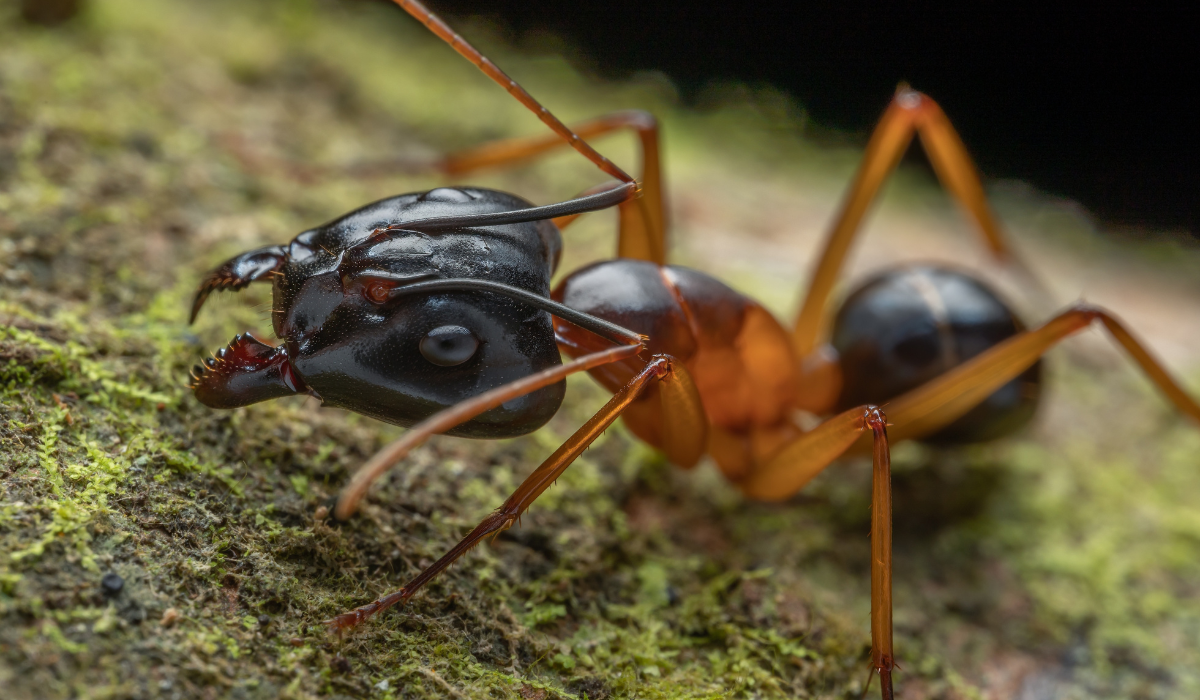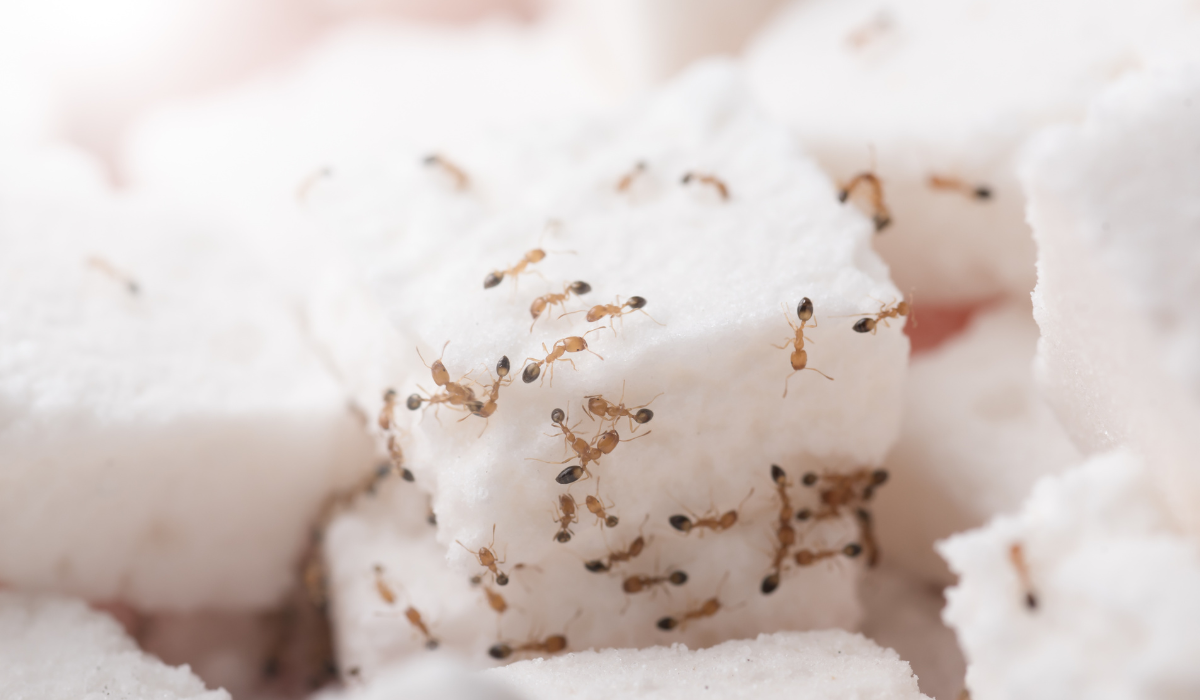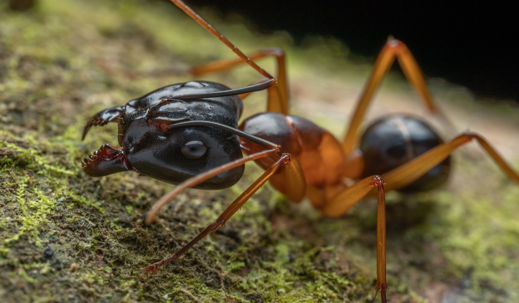Big-Headed Ants vs. Sugar Ants: What Florida Homeowners Need to Know
Florida homeowners often see ants because they are some of the most persistent pests in the state. Ants thrive in Florida’s warm, humid climate. Whether you live in a Fort Lauderdale condo or a West Palm Beach home, you’ve likely dealt with ant trails in your kitchen or along your baseboards.
But not all ants are the same. Different species invade Florida homes. Two of the most common invaders are big-headed ants and sugar ants. Identifying which ant species is in your kitchen or pantry is key to treating the problem effectively.
In this guide, you’ll learn how to tell big-headed ants from sugar ants, the signs of each infestation, and other common Florida ants to watch for. We’ll also cover prevention tips and how to choose the right professional ant control service.
Key Takeaways
- Big-headed ants vs. sugar ants in Florida differ in appearance, nesting habits, and treatment methods.
- Big-headed ants build soil mounds outdoors and form super colonies, while sugar ants (ghost ants and pharaoh ants) invade kitchens and hidden indoor spaces.
- Other Florida ants, such as carpenter ants, Argentine ants, fire ants, and white-footed ants, create unique challenges for homeowners.
- Professional pest control is often the most effective solution since DIY sprays or repellents can make ant infestations worse.
What makes big-headed ants different from sugar ants in Florida?
The main difference between big-headed ants and sugar ants in Florida is their appearance. Big-headed ants get their name from the colony’s major workers, which have oversized, dark heads compared to their reddish-brown bodies. Tiny ants likeghost ants and pharaoh ants are lumped under the name “sugar ants” because they go after sweets.
Big-headed ants usually nest outdoors in soil, lawns, and driveways, where they build large colonies. They sometimes enter kitchens when searching for food.
Sugar ants are usually seen trailing indoors, searching for sweets and water. You may also see them in landscaping, feeding on honeydew from aphids.
Identifying the ants’ nests and food sources helps you choose the proper control method. You can manage sugar ants by sealing entry points and storing food in airtight containers. But big-headed ants are best handled by professional ant control.
Signs you’re dealing with big-headed ants

Big-headed ants are easy to identify once you know what to look for. The larger worker ants have a broad, dark head that seems out of proportion with their more petite body. Their color can range from reddish-brown to dark brown.
Big-headed ants build visible soil mounds along sidewalks and near your home’s foundation. Because they form super colonies with multiple queens, they spread quickly. You may also see their trails moving indoors toward kitchens or pet food.
Unlike carpenter ants, big-headed ants don’t damage wood, but their large colonies are still frustrating.
Signs you’re dealing with sugar ants

If you’ve ever seen a line of tiny ants crawling across your countertops, they’re likely sugar ants. The most common “sugar ants” in Florida are ghost ants. They have pale legs and a dark head, making them tricky to spot on light-colored surfaces. On the other hand, Pharaoh ants are another sugar-loving species that thrives in South Florida’s warm climate.
Unlike big-headed ants, sugar ants don’t nest in soil outside. Instead, they build small nests inside your house’s walls, under baseboards, or in hidden crevices. Sugar ants feed on sweets, proteins, greasy foods, and honeydew from aphids and other plant pests.
Since sugar ants can split their colonies when disturbed, DIY sprays or repellents often make the problem worse.
Other common Florida ants you should know about
Florida homeowners don’t just deal with big-headed ants and sugar ants. Several types of ants make their way inside your home, including:
- Carpenter ants: Large black ants that hollow out wood, sometimes mistaken for termites because of the structural damage they cause.
- Fire ants: Aggressive reddish-brown ants known for painful stings, often nesting in yards and playgrounds.
- Crazy ants: Fast-moving, erratic small ants that overwhelm homes in large numbers.
- Acrobat ants: Named for their ability to raise their abdomen over their thorax when disturbed.
- Argentine ants: Known for forming massive super colonies, these invasive species can displace native Florida ants and invade homes in overwhelming numbers.
- White-footed ants: Often mistaken for black ants, these pests build large colonies in trees and shrubs and may spread into your home through entry points.
- Pavement ants: True to their name, they nest under driveways, sidewalks, and concrete slabs, often foraging indoors for crumbs and other food sources.
Each of these species requires a different approach, which is why proper identification is so essential before treatment.
How to prevent ant problems in your Florida home
Whether you’re worried about big-headed ants or sugar ants, prevention is always easier than dealing with a full infestation.
You can prevent indoor ant infestations by:
- Sealing entry points with caulk around windows, doors, and baseboards to block ants from getting inside.
- Storing food in airtight containers and wiping spills quickly to reduce their access to food sources.
- Eliminating water sources by repairing leaky pipes or faucets.
- Checking your landscaping for aphids, since honeydew often fuels ant colonies nearby.
For outdoor infestations, especially when super colonies of big-headed ants, Argentine ants, or fire ants are present, you’ll likely need help from a professional pest control company.
Making the right choice for ant control in Florida
Big-headed ants usually require outdoor treatments, while sugar ants hide indoors and need a different approach. Both are difficult to remove without professional pest control.
That’s why so many Florida homeowners trust Native Pest Management. Our local team specializes in identifying and treating all types of ants with family- and pet-safe solutions.
Contact us today to schedule a free inspection and take the first step toward an ant-free home.
FAQs
How can I tell if I have big-headed ants or sugar ants in my home?
Big-headed ants have large, dark heads and usually build soil mounds outside, while sugar ants are tiny, often ghost ants or pharaoh ants, and forage indoors for sweets.
Do sugar ants cause damage to my home like termites or carpenter ants?
Sugar ants don’t cause structural damage, but they can spread quickly indoors and contaminate food. Carpenter ants and termites are the species that threaten wood structures.
What is the best way to get rid of ants in Florida homes?
Prevention starts with sealing entry points and keeping food in airtight containers. For infestations, professional pest control can eliminate colonies and prevent them from coming back.
